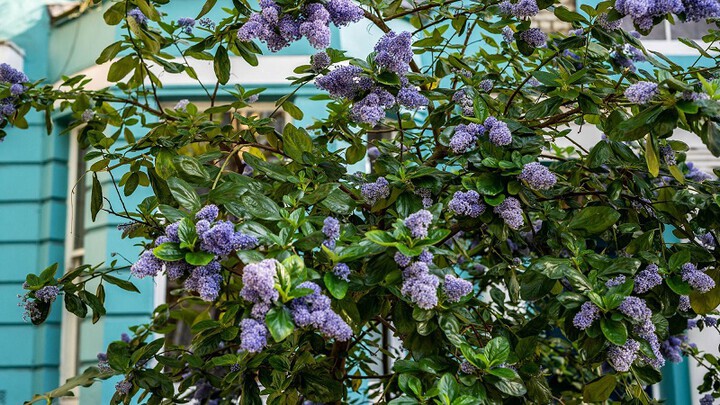Gardeners share several of their favorite varieties, and how to best care for each of them.
For as rewarding as growing lilacs at home can be, cultivating them is tricky. "Lilacs—their botanical name is Syringa vulgaris—are what some may call a single season plant," explains Cecilia de Corral, the Director of Design and Build at Brooklyn Grange Rooftop Farm. "They provide some of the earliest forage material for pollinators and emit a beautiful fragrance. Despite only providing blooms for a short-lived period, their fragrance and structure makes the space they'll take up in your garden well worth it." 
However, garden expert Melinda Meyers says your lilacs won't have a chance to grow if you don't care for them correctly. "Improper pruning is the biggest reason lilacs fail to bloom in areas where they can be grown," she explains of certain varieties. "These plants set their flower buds the summer prior to the spring floral display. Pruning anytime other than shortly after flowering can eliminate the following spring's blooms." Interested in learning more about the different types of lilacs and how to care for them? We asked three professional gardeners for their insight and here's what they had to share.
Common Lilac
Heather Trilling of Trilling Landscape Design & Build says that common lilacs (arguably the most popular variety) are beloved for their colorful and fragrant flowers. "The flowers are typically purple to lilac, but some cultivars can be magenta, pink, or white," she says. "Plant in full sun, so they will receive at least six to eight hours daily, and remember to prune after flowering. Since the roots are shallow, consider adding a layer of mulch to help moderate soil temperature fluctuations."
Dwarf Korean Lilac
If you aren't working with a ton of square footage in your garden, then de Corral says this is the lilac for you. "The Dwarf Korean Lilac is great for smaller spaces because of its size," she explains. "It typically doesn't exceed six feet in height, so it's a wonderful option for a lower hedge or as an accompanying shrub to a perennial landscape. It is also tolerant of urban conditions and can thrive in containers with appropriate drainage and light."
Manchurian Lilac
Also known as Syringa pubescens patula, Meyers says Manchurian lilacs, including Miss Kim, are highly sought after because of their eye-catching, aromatic flowers. "The flowers can be any color from icy blue and burgundy to lavender-pink and the plants can grow up to seven feet tall," she explains. "Fall planting is preferred, as the soil is warm and the air is cool, thereby reducing transplant shock, and major pruning should be done in late winter."
Persian Lilac
A spreading, graceful shrub with arching branches, the Persian lilac is the perfect plant to use for the borders of your yard, says Trilling, because their blooms attract butterflies and hummingbirds. "The leaves are dark green and pale pink flowers appear in spring and are very fragrant," she explains. "They prefer full sun and have an affinity for fertile, humus-rich, alkaline-to-neutral, dry-to-medium, and well-drained soil."
Chinese Lilac
A hybrid of common and Persian lilacs, de Corral says Chinese lilacs are known for their long-lasting dark purple blooms. "Its wide spreading branches make it a great option for cut flowers, and it's more resistant to powdery mildew than other varieties," she adds. To ensure they blossom to their full potential, Trilling says to water them at least once a week (or more if it's extremely hot outside), and fertilize in early spring. "Prune after flowering in the spring as well," she says.